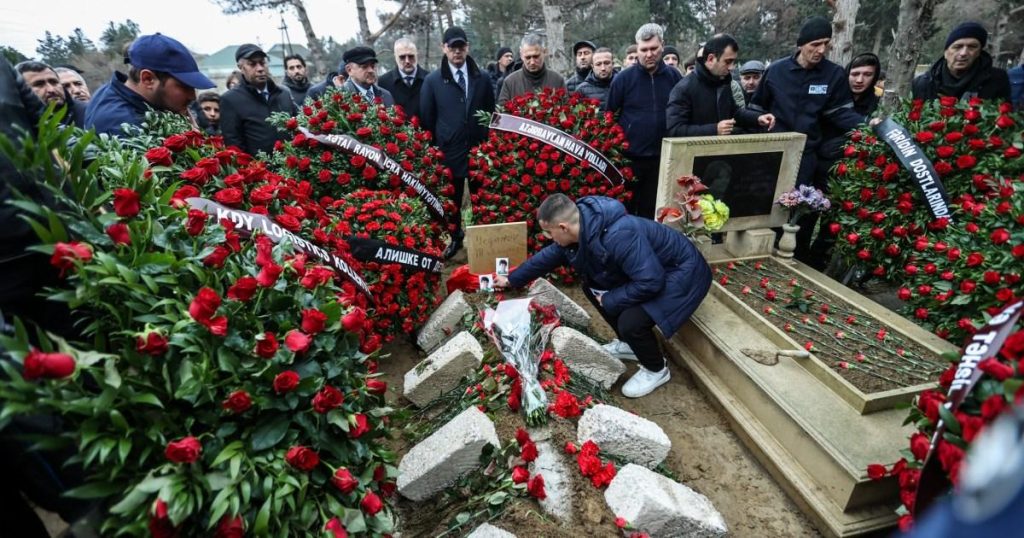The Christmas Day Tragedy: Unraveling the Downfall of Azerbaijan Airlines Flight 56
On Christmas Day, a festive occasion marred by tragedy, Azerbaijan Airlines Flight 56 met a devastating end, claiming the lives of 38 individuals. The aircraft, en route from Baku, Azerbaijan, to Grozny, Russia, crashed in Kazakhstan, plunging into a somber mystery that would unfold over time. While initial reports suggested technical malfunctions, the story took a sharp turn when Azerbaijan’s President Ilham Aliyev pointed fingers at Russia, alleging that the plane had been shot down by ground fire. This accusation ignited a diplomatic firestorm, prompting calls for a thorough and independent investigation into the incident.
Aliyev’s claims, broadcasted on state television, sent shockwaves through the international community. He asserted that certain factions within Russia had attempted to suppress the truth by fabricating alternative narratives about the crash. This alleged cover-up further fueled suspicions and raised concerns about transparency and accountability. Concurrently, survivors of the crash recounted hearing loud noises as the plane circled over Grozny, adding another layer of intrigue to the unfolding narrative. They also reported that the plane had been denied landing permission in Russia, a detail that became increasingly significant as the investigation progressed.
While President Vladimir Putin of Russia expressed condolences and acknowledged that Russian air defenses had been active in the vicinity of the crash at the time, he stopped short of accepting responsibility. This carefully worded response did little to quell the growing international pressure for a transparent inquiry. The UK government, in a strong statement, echoed the demand for an independent investigation, highlighting the "reckless and irresponsible actions of the Russian state" and the threat they pose to international security. This diplomatic rebuke underscored the gravity of the situation and the potential ramifications for international relations.
The crash site, a grim tableau of wreckage and debris, became the focal point of a multinational investigation. Photographs of the scene depicted the mangled remains of the aircraft, a stark reminder of the human cost of the tragedy. One photograph captured a section of the plane remarkably intact amidst the destruction, a poignant image that underscored the sudden and violent nature of the crash. Experts meticulously combed through the wreckage, searching for clues that could shed light on the sequence of events leading to the disaster.
President Aliyev’s office issued a statement indicating that he had communicated with President Putin, attributing the crash to "external physical and technical interference." This carefully chosen phraseology avoided directly blaming Russia while still implying external involvement. The Kremlin, in response, announced the launch of a criminal investigation, with the assistance of Azerbaijani and Kazakh authorities. This collaborative effort aimed to uncover the truth behind the crash and determine the extent of Russian involvement, if any.
The Christmas Day crash of Azerbaijan Airlines Flight 56 serves as a stark reminder of the fragility of life and the importance of transparency and accountability in the aftermath of such tragedies. The incident, shrouded in conflicting narratives and accusations, underscores the complexities of international relations and the challenges in pursuing truth and justice in a politically charged environment. As the investigation continued, the world watched, awaiting answers that could bring closure to the families of the victims and prevent similar tragedies in the future.











